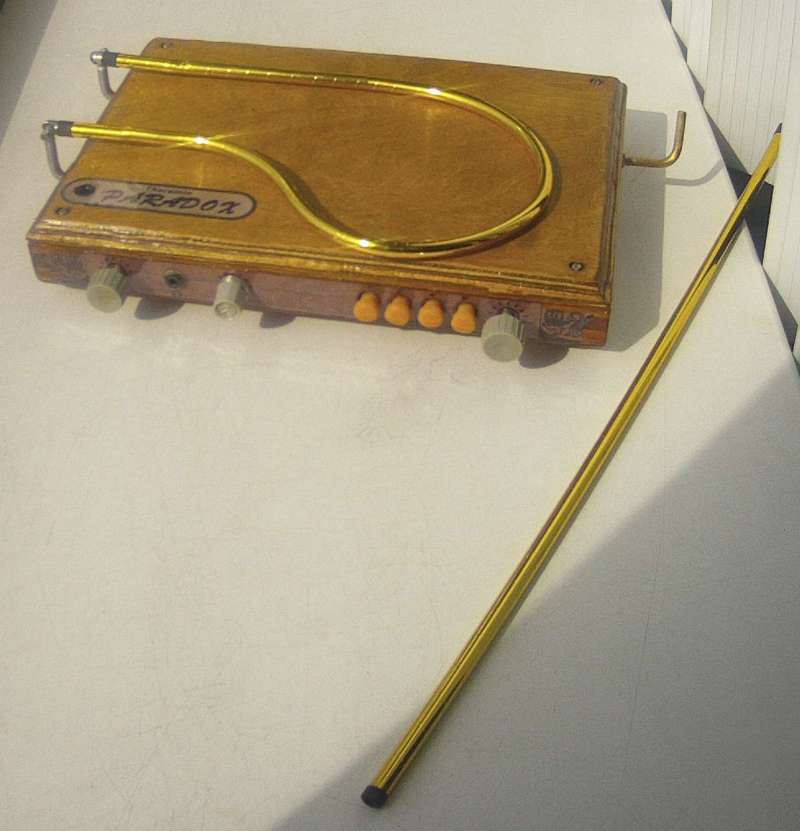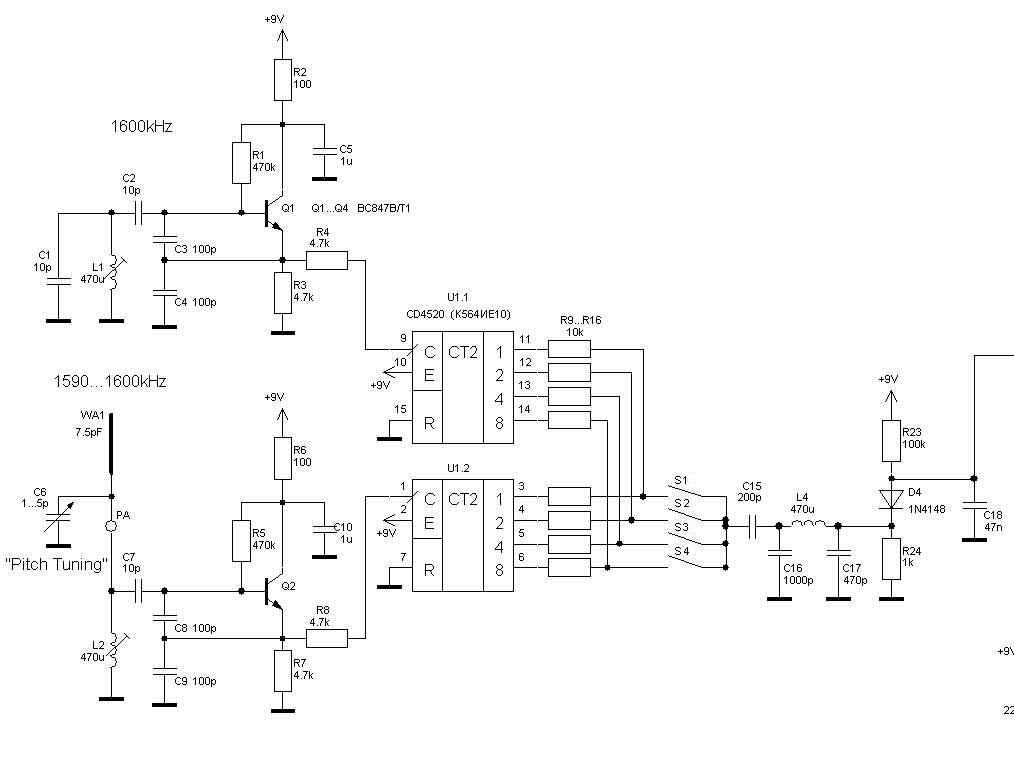"Good luck, and please report on your progress!" - dewster (from here)
ok dewster,
that theremin is finished now:
Lets recall the main ideas:
1. Using the MHz oscillators and extra dividers

2. A common fixed oscillator for both the pitch and volume channels.
3. The TV audio amplifier AN5265 as a VCA.
A full description of project is available on my webpage (link, English auto translation)
(or in Russian).
The sound samples on different combinations of S4 ... S1 (named as 1', 2', 4' and 8' registers) can be listen here:
"bass" group
demo1.mp3 - register 1'
demo1-2.mp3 - registers 1'+ 2'
demo1-4.mp3 - registers 1'+ 4'
demo1-2-4.mp3 - registers 1'+ 2' + 4'
"tenor" group
demo2.mp3 - register 2'
demo2-4.mp3 - registers 2'+ 4'
"alto" group
demo4.mp3 - register 4'
demo4-8.mp3 - registers 4'+ 8'
The loudness of "soprano" register (8') is quite small due to low cutoff frequency of C16L4C17 filter (can be corrected if desired).
The audio across the "line output" (headphones jack) was recorded "as is", but a bit of reverberation was added in second half of each track.

